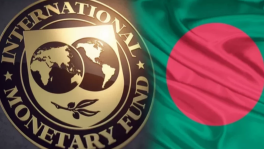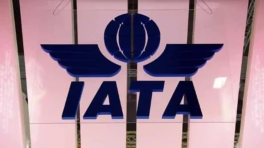The micro lending crunch
More and more people were likely to seek support from microcredit during the pandemic, but that did not happen

The ASA office in Kaukhali upazila looked like a desolate place. The door was wide open. Inside, empty chairs, stools and shutdown computers were bearing signs of its idle days.
On the back wall were posters highlighting notable works of the four-decade-old microcredit organisation and its financial and social services, and a map dotted with its office locations in the southern coastal district of Pirojpur.
The sun hung in the middle of the sky by the time on a Thursday, more than two months after the coronavirus shutdown had been withdrawn. Yet, no client showed up to seek loans, nor did anyone come for repayment.
This southern part of the country is inhabited by mostly ultra-poor people, surrounded by waters. They have survived on meagre savings during the countrywide shutdown until May 30 and after.
Small businesses have gradually started to operate, but demand for their products or services is low, holding them back from running full throttle. Those who reared livestock for eggs, milk and meat saw their incomes drop by more than half, as reported by field-level workers of Brac and ASA.
Adding to their financial woes, many families are seeing their younger members return from the capital and other well-off urban areas after lay-offs by manufacturers and companies in the service sector. Day labourers without work for months also were compelled to go back home instead of waiting for jobs that never came their way.
Normally, with economic pressure piling up like this, more and more people would likely seek support from microcredit, but that is not happening.
Small loans usually of up to Tk50,000 help people run some businesses to help them climb out of poverty.
According to a projection by the Centre for Policy Dialogue, the poverty rate that had been brought down by targeted social and financial programmes over the decades to 24.3% in 2016 would go back up to 35% this year due to the pandemic.
A study by Brac Institute of Governance and Development and Power and Participation Research Centre points to a 73% drop in income in households living in extreme poverty in the first week of April, compared to that of two months before.
The pandemic persists, so does the economic downturn.
That only emphasises that more people will need support in the form of small loans or microcredit. But the Covid-19 casts doubt over the potential return on investment. So, on the one hand, people are reluctant to take loans, while on the other, microcredit organisations have intensified measures to examine creditworthiness before granting a loan.
Besides, the non-government organisations (NGOs) themselves have plunged into a cash crisis due to a sharp fall in the recovery rate. The Tk3,000 crore stimulus package allocated for microfinance institutions is not enough to meet the new poor's demand, said former Bangladesh Bank governor Atiur Rahman.
Loans will be disbursed at a subsidised interest rate of 9% to borrowers from the fund.
New borrowers are not coming to the Brac offices in Pirojpur, said Bivonjan Biswas, who has been overseeing the NGO's regional operations since December. Only some of the trusted customers of Brac are applying for loans to revive their businesses, he added.
The economic recovery in the region is not coming anytime soon because people are not ready to take the risk of setting out on a new business venture or expansion with loans, said Dipok Chakraborty, regional manager of Kaukhali, ASA.
The uncertainty of being able to pay back the loan is discouraging them to come forward, he added.
Loans becoming difficult for newcomers
Even if some of the existing borrowers are granted loans as they pass the assessment of creditworthiness, newcomers would find it hard to make the cut.
Dipok said ASA field officers were recommending to the head office to offer loans at low-interest and with easy terms to borrowers to recover from the loss inflicted by the shutdown and the cyclone Amphan in May which tore through the country, damaging roads, properties and human lives.
But providing such loans to new borrowers would be difficult because "We ourselves are facing a cash crunch," he added.
Not enough money to go around
This liquidity crisis of the NGOs came about as they stopped collecting money from their borrowers hit hard by the pandemic. A government instruction also bars them from doing so until September. Clients, however, can repay loans if they wish to.
This has caused a slump in the recovery rate, hovering between 50% to 65% this month, down from 98-100% in the pre-coronavirus period, according to ASA and Brac offices in Kaukhali.
ASA in Kaukhali estimated a loss of around Tk18 lakh between January and July, meaning that its operational expenditure exceeded its income.
The situation in other parts of the country is similar, depending on the pace of economic rebound, job and income opportunities and road networks, said Md Fazlul Hoque, senior loan officer at ASA – as he sat in front of his dark computer at a corner of the Kaukhali office that Thursday afternoon.
The recovery of about 25% loans will drag on for long, maybe for years, he said, adding that those who had taken large credits have stopped paying back their instalments since March.
The Microcredit Regulatory Authority (MRA) has no data yet from microfinance institutions on how much of their small loans remain outstanding during the pandemic.
"We have not yet started receiving or collecting data on how much money remains unpaid since we issued the instruction. We may get a picture of the unpaid amount at the end of September," MRA's Executive Vice-Chairman Amalendu Mukherjee told The Business Standard on Monday.
More than 700 NGOs and microfinance institutions disbursed Tk1,201.91 billion in the fiscal year 2017-18, when their recovery amounted to Tk1,112.21 billion, posting an average monthly recovery of Tk92.68 billion, according to the MRA data released in 2018.
Microcredit lenders are arguably the best sources of collateral-free funds for people who are left out of the conventional banking system.
Over time, the microcredit organisations came up with innovative credit schemes to reach out to the poorest of the poor like landless farmers. They can repay a loan in a single instalment only after the sale of their produce. Social services like counselling, building awareness of women rights, training and research have also been conducted side by side to attain the poverty alleviation goal.
Alongside small loans, the NGOs now supply bigger funds, named microenterprise loans, up to Tk10 lakh, so that entrepreneurs can enlarge their business capacities.
Microcredit can help pave the way for the economic recovery to some extent, said former central bank governor Atiur Rahman. But for that the NGOs must get fresh funds at low cost so they can expand their lending operations in remote areas at lower interest rates.
Banks have low-cost funds and they can go for partnership with microcredit organisations to that end, the economist said.
To understand the issues that the poor are facing and find out their needs, a monitoring committee should be formed with representatives from Bangladesh Bank, the Microcredit Regulatory Authority, Credit and Development Forum and the Ministry of Finance, Atiur Rahman said.
He also emphasised the need for increasing the demand in the market with the government's continued cash support to the poor, and employment generation through urgent cash-for-work projects like improving road networks.
"A cash flow would raise consumption, making rooms for microcredit borrowers to meet the demand," Atiur Rahman said.
PKSF to begin disbursement of Tk3,400 crore soon
Dr Qazi Kholiquzzaman Ahmad, chairman of government-founded Palli Karma-Sahayak Foundation (PKSF), that accounts for one-third of the total outstanding loans in the sector, said the PKSF would disburse Tk3,400 crore through more than 100 partner organisations in the next few months to support existing and new borrowers, along with other necessary non-financial services.
The PKSF also approached development organisations such as the Asian Development Bank, the World Bank and the International Fund for Agricultural Development through the government for funds for income generating activities and enterprise development so that it and its partner organisations can expand the coverage, said Dr AKM Nuruzzaman, general manager at PKSF.
Microfinance institutions may hold a small part of the economy, but its 3.12 crore customers across the country and the total outstanding loan of Tk67,390 crore, as of June 2018, shed light on its capacity to help the worst sufferers of the pandemic.
However, recovering their own strength remains a precondition for that.


 Keep updated, follow The Business Standard's Google news channel
Keep updated, follow The Business Standard's Google news channel













